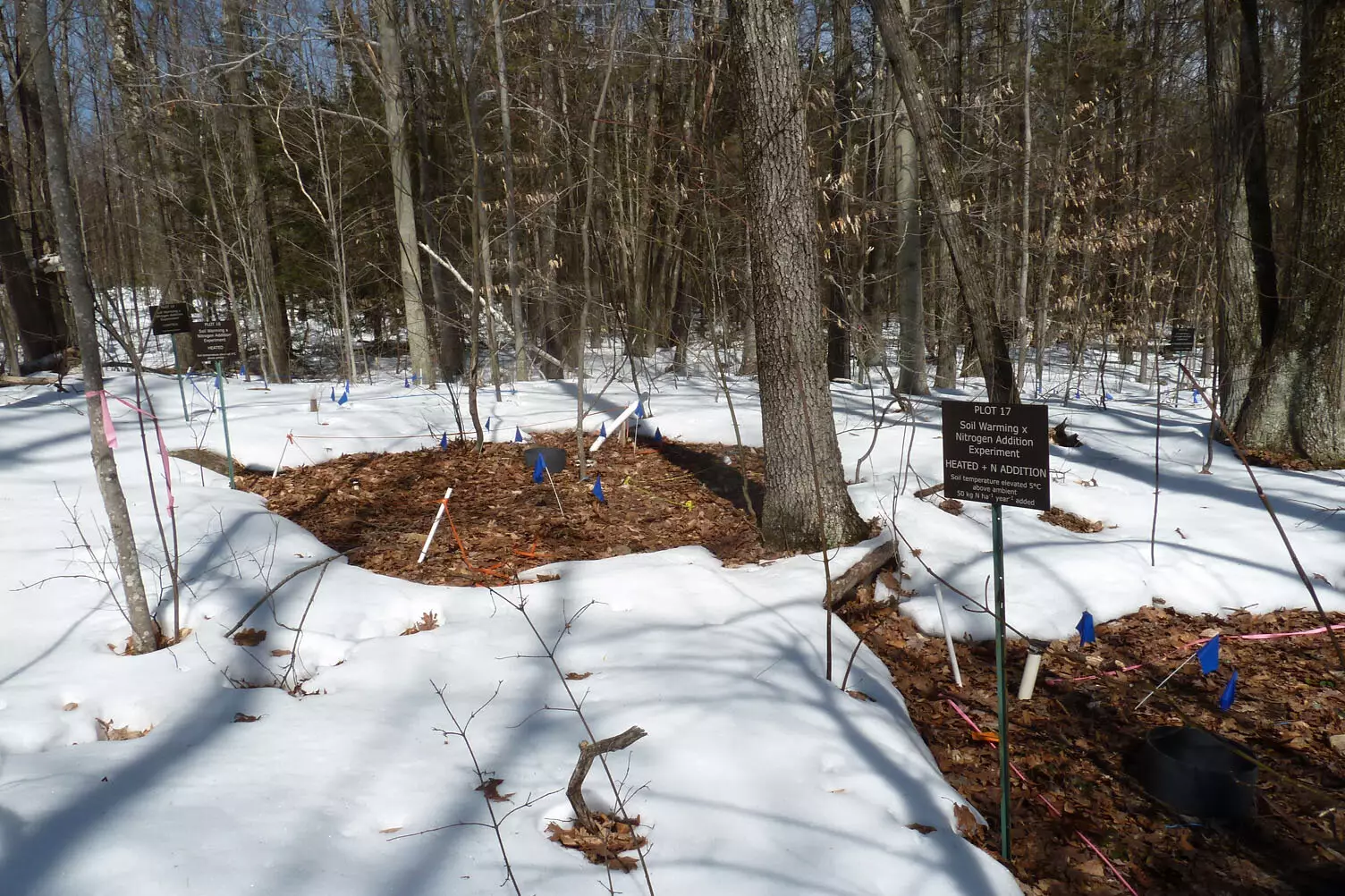As environmental concerns intensify worldwide, studies addressing the multifaceted challenges that ecosystems face become increasingly vital. New England’s forests are grappling with a range of environmental stresses, particularly rising temperatures and heightened nitrogen levels in the soil. While researchers have closely examined these factors in isolation, a groundbreaking study at the University of New Hampshire has explored their combined effects. This article delves into the implications of this significant research and assesses how it reshapes our understanding of forest dynamics in the context of climate change.
What sets this research apart is its dual focus on climate change and nitrogen deposition rather than examining each factor independently. Conducted over 16 years at the Harvard Forest Long-Term Ecological Research site in Massachusetts, the study offers critical insights into the interactions between warming soil and excessive nitrogen from fossil fuel combustion. The research team, led by Melissa Knorr and Serita Frey, meticulously manipulated soil conditions to simulate increased temperatures and nitrogen levels—specifically raising soil temperatures by 5°C and introducing nitrogen fertilization at a rate of five grams per square meter annually.
This long-term experimental design is particularly noteworthy. The comprehensive approach allows researchers to observe complex ecological responses over an extended timeframe, providing data that could inform future conservation efforts. It reflects a paradigm shift in scientific inquiry where interactions between multiple stressors are assessed, rather than limiting analyses to isolated phenomena.
One of the most exciting revelations from the study is the unexpected stability of carbon storage within these manipulated ecosystems. Contrary to previous predictions that climate change alone would lead to significant carbon loss from soils, the combined presence of warmer temperatures and nitrogen enrichment revealed a more complex reality. The increase in belowground plant carbon inputs—particularly through the processes of root turnover—appears to mitigate the anticipated loss of soil carbon.
The research indicates that while microbial activity continues to decompose organic matter, leading to CO₂ emissions, enhanced root growth and turnover contribute new carbon to the soil, effectively counteracting net losses. This finding is crucial, especially in the context of climate change, as it suggests that the repercussions for carbon storage in forests may be less severe than previously believed.
The implications of these findings are far-reaching. For policy makers and conservationists, understanding the dynamics of plant-soil interactions can be pivotal in devising strategies for managing forest ecosystems. As nitrogen deposition persists at levels significantly higher than pre-industrial conditions, it becomes essential to foster forest health and promote carbon sequestration capabilities.
The research underscores the intricate balance between nitrogen enrichment and plant productivity in New England’s forests. As ecosystems evolve under the pressures of climate change, it is imperative to consider such interactions when formulating conservation plans. By embracing a holistic approach that acknowledges the influence of multiple stressors, it may be possible to enhance the resilience of forests and fortify their roles as carbon sinks in both local and global contexts.
In the face of a changing climate, the study sheds light on the necessity of reevaluating ecological models that traditionally focus on single factors. By integrating these dual challenges—temperature increases and nitrogen deposition—the researchers provide a more nuanced understanding of how forests may adapt or falter under climatic pressure. This multifaceted analysis holds significant potential for guiding not only academic research but also practical environmental management practices.
As New England’s climate continues to evolve, ongoing research will be pivotal in unlocking the complexities of these ecosystems. It is crucial that future studies continue exploring diverse interaction effects, as fostering resilience in these vital ecosystems is key to addressing broader climate change issues. In making informed decisions that leverage scientific findings, we can work toward ensuring that our forests remain robust and capable of capturing the carbon dioxide essential to combatting climate change.
The exploration of simultaneous environmental stressors, as highlighted in this pioneering study, marks an important advance in ecological research. As we confront the realities of a warming world, understanding the interplay between climate change and nitrogen pollution in New England’s forests can inform effective conservation strategies. This knowledge not only enriches the scientific discourse but also empowers us to protect our precious ecosystems for future generations.

